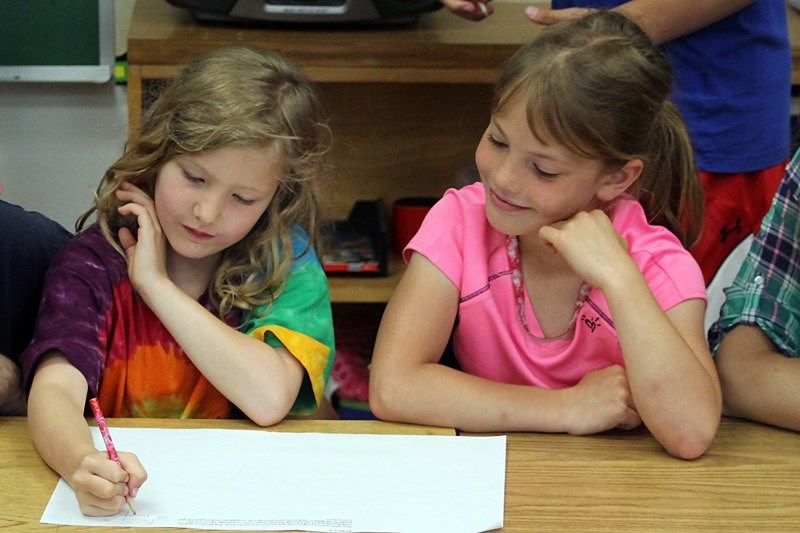THUNDER BAY -- Problem solving met 21st-century technology at Corpus Christi School this year.
The experiment worked, said parent Heather Helke, whose son, Aiden, is a Grade 3 student at the north side school. The year-long program helped her son communicate how he was solving mathematical problems, rather than just trial and error.
“It helps them go through different strategies to problem solve and to be able to actually explain everything out,” Helke said.
The improvement and excitement is readily noticeable in her son, she added.
“Definitely,” she said. “I have an older son that’s in Grade 7 and he didn’t go through this program. With Aiden, he definitely has a bigger interest in (math). There’s been some improvement and the interest is there. I find he’s talking about math a lot more. In general, he’s figuring out math stuff even when he’s not having homework.”
Eight-year-old Aiden was all for the program, which included an online blog that allowed parents to follow along at home and problem solve with their children.
Working with his parents and using technology like the 14 iPads the school has been using as part of the program, have become some of his favourite school-time activities this year.
It’s been great, he said.
“It helps me to figure out different ways to answer the question,” he said.
As school officials explain, each student tackles each problem presented to them a little differently. On Monday students were asked to figure out how many juice box packages a teacher might need to purchase to provide 38 students with their own individual drink.
The teacher already had two packages, each one containing eight juice boxes.
Students, together with their parents, partnered to figure out the math on paper, then used their iPads to take a picture and upload their work.
Corpus Christi principal Peter Prochilo said it’s been an overwhelming success at a school where math has been a focus for the past several years.
“It’s a great way to see where we’ve come along with mathematics,” he said, adding it’s also boosted parental engagement in learning activities.
Most importantly, he added, it’s a way to combine traditional mathematics with modern technology.
“It’s certainly 21st century skills that we’re trying to embed using the technology. Students certainly have to have critical thinking skills, creativity and collaboration. All of those are put into play, not only in using traditional math sense and math skills, but using that moving forward and how we can use technology effectively with those skills to move those skills along,” Prochilo said.
